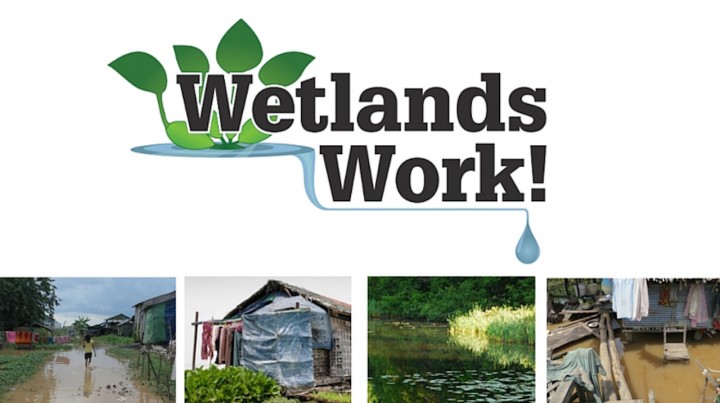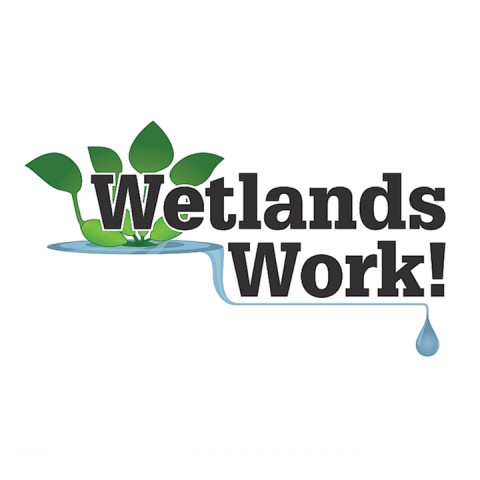Purpose
To design and field-test at village scale a simple cost-effective wastewater treatment system for floating communities in Southeast Asia. Floating “Pods” that use the microbial activity on aquatic plant roots are installed under the toilet of houseboats.
Activities
The socio-entrepreneurial start-up Wetlands Work! received a grant in Round 7 of the Bill and Melinda Gates Grand Challenges Exploration program. WW! has developed an individual household wastewater treatment system that uses floating “Pods” - similar in appearance to children’s wading pools - that are positioned directly under the toilets of houseboats occupied by low-income fishing families. Similar to aquatic mesocosms, the Pods are filled with floating plants, and the bacteria that reside on the plant roots are capable of breaking down contaminants and making the water significantly cleaner. Presently, Pods are installed throughout an entire floating community and data on water quality (indicator organisms) and diarrheal incidence (children 10 yrs.) are monitored and compared to a control village without pod intervention.
Images

Image: WW 2
Countries of activity
Location of main activity
Objectives
1) Floating “Pods”: developed and refined Pod structure containing common water hyacinth (Eichhornia crassipes) and associated mesocosm biota constructed from widely used tarpaulin and other locally available materials. The volume of a single Pod is ~236 litres (1 x 1.5 x 0.4 m). Two connected Pods are used per household. The first, which is positioned directly under the toilet, covered and predominantly anaerobic, is linked through a small opening to a second Pod, predominantly aerobic and containing plants. This set-up eliminates odor and increases treatment capacity.
2) Pod tests: demonstrated the ability of the single aerobic Pod to significantly reduce E. coli (an indicator bacterium) levels under controlled conditions by 3 log orders in a 24-hr period, for example from 6.7 to 3.9 log reduction of E. coli. Pods were filled with clean water and hyacinth (~3.5 kg). Sewage or raw feces were added and E. coli measured in water samples.
Pod tests on lake: A tracer study will be used to determine most efficient retention time and flow between double Pods and out flow to ambient water.
Pilot Pod village tests: Single Pod tested 1+ year at a floating research station and then for 4 months at a villager’s house, followed by village-wide deployment of double Pods since January 1, 2013.
Two villages have been selected, with one acting as a no-intervention control, while in the second treatment Pods are widely adopted in all but three houses. There are approximately forty households in one, fifty in the other at similar income levels. Each family has between 4 to 6 people.
A weekly survey is used to gauge the health of 0-10 year olds (our target group is 0-5 yr olds) in the villages using a simple questionnaire on gastrointestinal symptoms.
After 18+ months of Pod usage, health and water quality data collected over the course of Pod implementation in the two villages will be statistically assessed.
3) Field-testing on the village scale (40 households, 37 Pods, 198 people): Observing and addressing usefulness, behavioural adaptation and maintenance issues, as well as optimising Pod size to ensure sufficient treatment capacity for larger households of 7 or more, including schoolhouse. Further, testing locally available materials (e.g. bamboo baskets) to adapt in Pod construction.
4) Field-testing in Burma: In addition to the floating villages in Cambodia, a variant treatment Pod is being designed for pilot introduction in two stilted home communities (~50 Pods each, total ~460 people) living on Lake Inle, Burma, which face similar challenges in sanitation. The administrative framework and MOU are in place, and we are currently awaiting funding.
Further information
Research or implementation partners: Conservation International in Cambodia and Inle Lake and Watershed Development Association and Institute of International Development in Burma
Filter tags
Bill & Melinda Gates Foundation Constructed wetlands East Asia & Pacific Practitioners Private sector, including social enterprises Product design and engineering Rural Rural areas Specific to one or several countries Treatment of wastewater or greywater
















